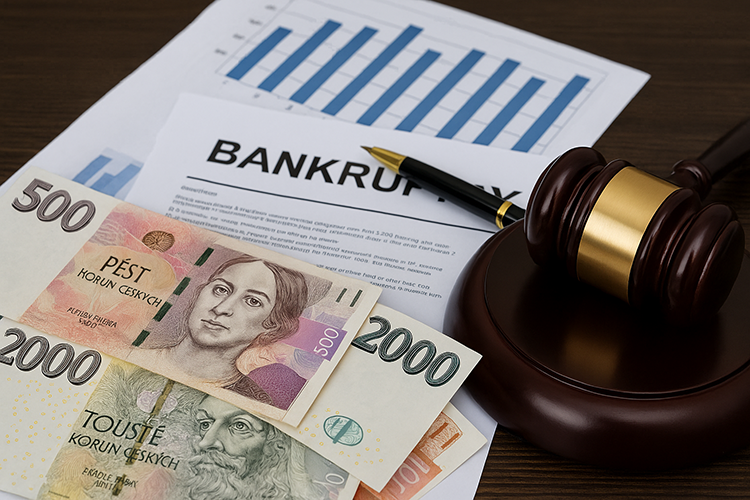2025-10-09
indicators

The number of Czech companies unable to meet their financial obligations has risen sharply this year, reaching the highest level in almost a decade. Data compiled by the Czech Credit Bureau (CRIF) shows that 575 firms entered bankruptcy proceedings between January and September 2025, an increase of around 10% compared with the same period last year. This marks the most insolvency cases recorded in the first three quarters of any year since 2017, pointing to continued financial strain in parts of the business sector. Courts also received roughly 830 new insolvency filings, suggesting that the upward trend is likely to continue into the final months of the year. Analysts attribute the rise to a combination of tighter financing conditions, rising operational costs, and slower growth across several industries. “The latest figures bring the number of bankruptcies close to those seen in the aftermath of the last major market correction eight years ago,” said Věra Kameníčková, an analyst at CRIF. “Some regions are being hit harder than others, reflecting the uneven pace of recovery across the country.” Regional and sectoral differences The sharpest increases in company failures were seen in northern and western regions, with Ústí nad Labem and Plzeň both reporting steep year-on-year growth. By contrast, South Bohemia recorded a notable decline in bankruptcies, while levels in several central and eastern regions remained largely unchanged. Among major industries, the construction sector recorded the fastest rise in insolvencies, up by roughly a quarter from last year. Retail and wholesale businesses also saw more closures, reflecting persistent consumer caution. In contrast, the real estate sector held steady, showing no significant year-on-year change. Over the past 12 months, the highest number of company failures occurred in trade, manufacturing, and construction, with smaller clusters in property management and transport. Businesses involved in public services such as education and healthcare remained the most resilient, with very few cases reported. Financial strain still visible According to CRIF’s analysis, around a third of insolvency applications are dismissed because firms cannot cover the basic costs of bankruptcy proceedings. Meanwhile, data from the banking sector points to a modest rise in non-performing business loans, indicating that many firms continue to operate under tight liquidity conditions. Despite regional variations, analysts see the overall increase as part of a broader correction following several years of artificially low insolvency numbers during the post-pandemic recovery. “The Czech corporate sector remains broadly stable, but we are observing more businesses facing structural challenges—especially smaller companies exposed to cost pressures and slower demand,” Kameníčková said. With the year-end approaching, the trend suggests that 2025 could close with the highest number of corporate bankruptcies in nearly ten years, reflecting both cyclical headwinds and long-term shifts in how Czech companies manage financial resilience. Source: CTK

